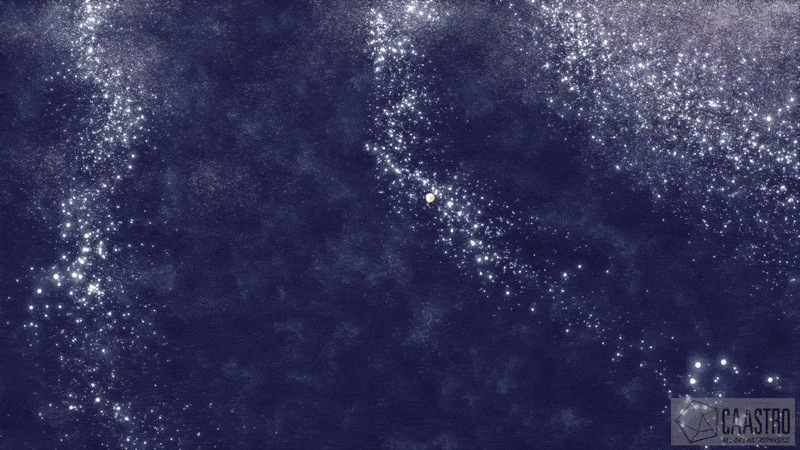|

by Alan Duffy
13 November
2018
from
CosmosMagazine Website

The solar system,
and Earth's various dark matter detectors
will experience the additional dark matter
as moving at speeds far faster
than that of 'conventional' dark matter.
The ARC Centre of Excellence
for All-sky Astrophysics (CAASTRO)
The
effects of a long-distant galactic collision
may soon aid in
the search for
a mysterious
particle...
Our solar system is plunging through a galaxy cannibalized by the
Milky Way, raising the prospects for detection of its
dark matter remains.
The Milky Way, and indeed all galaxies, formed within a vast halo of
invisible additional mass called dark matter, which outweighs the
visible component five times over.
The motion of the solar system around the Milky Way means it moves
through this dark matter halo at 230 kilometers per second. The dark
matter, thus, appears to us as a high-speed "wind".
Last year, the motions of nearby stars in the solar neighborhood
were measured by the European Space Agency's
Gaia satellite and a previously
unknown stream, dubbed S1, was detected - the telltale
remains of a smaller dwarf galaxy cannibalized by the Milky Way.
Now a study (Dark
Matter Hurricane - Measuring the S1 Stream with Dark Matter
Detectors) published in the journal Physical Review D,
led by Ciaran O'Hare from the University of Zaragoza in
Spain, finds that 10 billion solar masses worth of dark matter from
that galaxy is travelling along S1, directly towards the Sun.
This dark matter should strike the Sun - and any detectors on Earth
- at speeds of 500 kilometers per second - much faster than the
standard dark matter wind.
O'Hare and colleagues
call it a "dark matter hurricane".
The study explores several popular candidates for the as yet unknown
particle that makes up the dark matter to test how this hurricane
would impact direct detection experiments.
The standard case posits a weakly interacting massive particle
or
WIMP, from a few to hundreds of
times the mass of a proton, that collides with atoms to produce a
visible nuclear recoil.
These are currently the
target for several
sodium iodide crystal and liquefied
xenon detectors.
O'Hare and colleagues looked at one of the latter - the
LZ experiment located at the Sanford Underground
Research Facility (SURF)
in South Dakota, US - and found the stream could be detected above
the standard wind if it made up 10% of local dark matter, and the
particles were between five and 25 times the mass of a proton.
As the S1 stream "hits the solar system slap in the face", the
authors write, its counter-rotating structure will dramatically
increase the amount of dark matter appearing to come from the same
patch of sky as the standard dark matter wind.
Indeed, it should produce
a tell-tale 'ring' like structure around this wind, something that
directional dark matter detectors such as the multinational
CYGNUS collaboration could easily
detect in future.
Finally, the most dramatic sign of the hurricane was found for the
case of exotic dark matter particles known as
axions.
These superlight
candidates can be converted into photons in the presence of intense
magnetic fields. They are rapidly gaining favor among dark matter
hunters worldwide.
Whatever the elusive particle turns out to be, the prospects of its
discovery have improved since the discovery of S1.
O'Hare and colleagues say
the onrushing hurricane will increase dark matter detection
prospects "substantially"...
|


